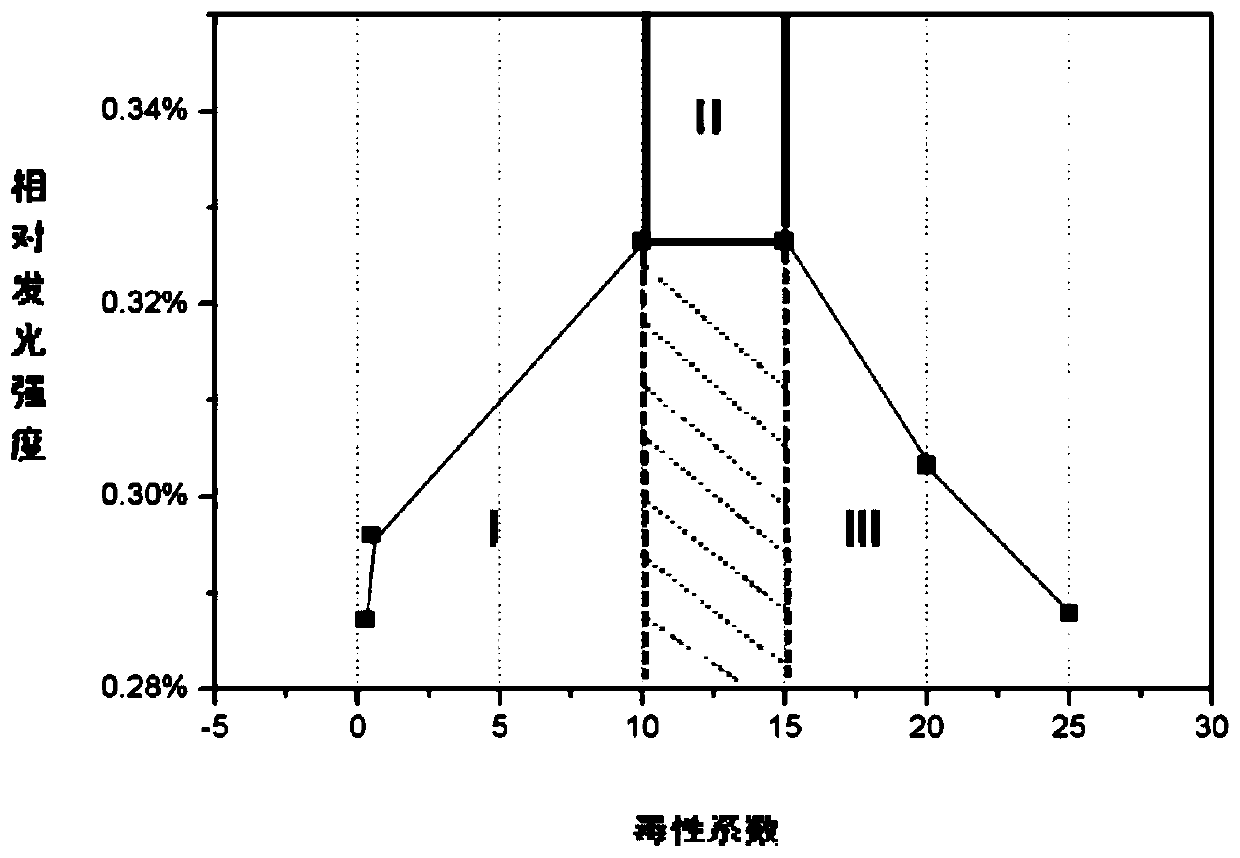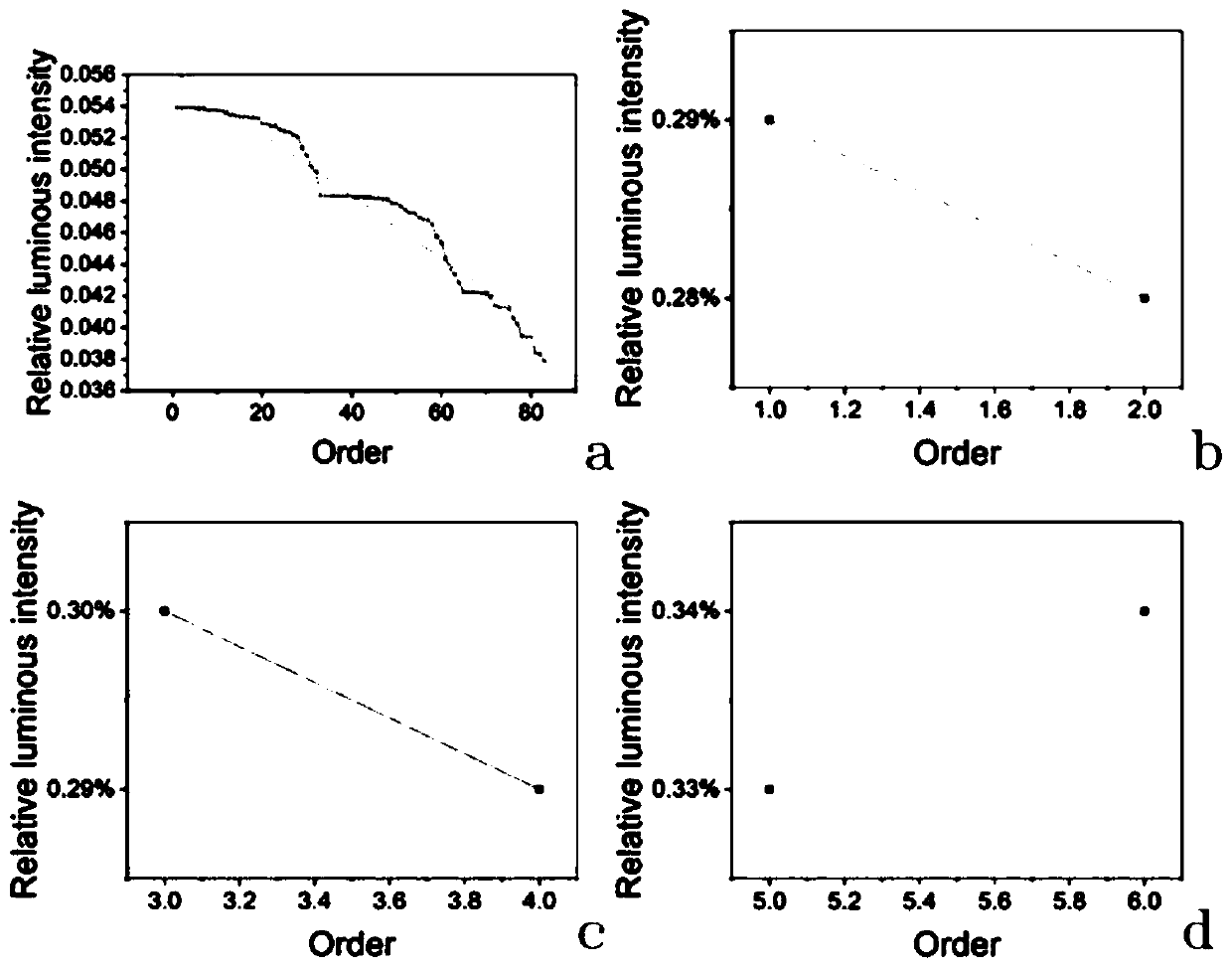Method for detecting comprehensive content of soil heavy metal by luminous bacteria and application thereof
A technology of luminescent bacteria and heavy metals, applied in measuring devices, chemiluminescence/bioluminescence, and analysis through chemical reactions of materials, can solve problems that have not yet existed, and achieve fast reproduction speed, strong vitality, and great application prospects Effect
- Summary
- Abstract
- Description
- Claims
- Application Information
AI Technical Summary
Problems solved by technology
Method used
Image
Examples
Embodiment 1
[0025] A method for photobacteria detection of soil heavy metal comprehensive content of the present embodiment comprises the following steps:
[0026] 1) Sample pretreatment:
[0027] Collect the soil near a plastic factory and remove debris, including gravel, stones, sticks, weeds, plant roots, insect corpses, stones, and new bodies such as manganese nodules, lime nodules, etc.;
[0028] Spread the soil after removing debris on a drying board or wooden board lined with clean white paper to dry naturally, and exposure to the sun is strictly prohibited. When the soil is semi-dry, break up large pieces of soil to avoid forming hard lumps, and pick up gravel, animal and plant residues at any time during the air-drying process. The air-drying room ensures drying and ventilation, the air-drying temperature is 30-35°C, and the air-drying time is 3-7 days;
[0029] Grind the air-dried soil with a grinding rod. First, it needs to pass through a nylon sieve with a pore size of 2mm, ...
Embodiment 2
[0046] The difference between embodiment 2 and embodiment 1 is:
[0047] In this embodiment, the soil near a certain discontinued factory was collected as a test sample. After removing gravel, stones, weeds, and plant residues, the sample was ground, and then ground and sieved 3 times after passing through a 2mm sieve until only A small amount of sand is stopped, and then passed through a 100-mesh fine sieve. The sieved soil was made into a soil suspension at a ratio of soil: water = 1:5, shaken on a shaking table for 8 hours, and after standing for 16 hours, the supernatant was obtained, filtered with a 20-micron ultrafiltration membrane, and the filtrate was filtered at a speed of Centrifuge at 7000 rpm for 3 minutes to obtain a colorless and transparent solution as the sample to be tested.
[0048] In this example, the relative luminous intensity of the obtained sample is 0.773%, corresponding to the toxicity interval II level, and the total toxicity of the soil is equival...
Embodiment 3
[0050] The difference between embodiment 3 and embodiment 1 is:
[0051] In this embodiment, the soil near the metal processing plant is collected as a test sample, and the sample is ground after removing gravel, stones, weeds, and plant residues, and then ground after passing through a 2mm sieve, and sieved 5 times until only a small amount The sand particles are stopped, and then passed through a 100-mesh fine sieve. The sieved soil was made into a soil suspension at a ratio of soil: water = 1:5, shaken on a shaking table for 8 hours, and after standing for 16 hours, the supernatant was obtained, filtered with a 20-micron ultrafiltration membrane, and the filtrate was filtered at a speed of Centrifuge at 9000 rpm for 3 minutes to obtain a colorless and transparent solution as the sample to be tested.
[0052] In this embodiment, the relative luminous intensity of the obtained sample is 0.553%, corresponding to the toxicity interval II level, and the total toxicity of the so...
PUM
 Login to View More
Login to View More Abstract
Description
Claims
Application Information
 Login to View More
Login to View More - R&D
- Intellectual Property
- Life Sciences
- Materials
- Tech Scout
- Unparalleled Data Quality
- Higher Quality Content
- 60% Fewer Hallucinations
Browse by: Latest US Patents, China's latest patents, Technical Efficacy Thesaurus, Application Domain, Technology Topic, Popular Technical Reports.
© 2025 PatSnap. All rights reserved.Legal|Privacy policy|Modern Slavery Act Transparency Statement|Sitemap|About US| Contact US: help@patsnap.com


